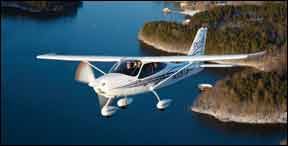The relatively lackluster sales of new LSAs has proven one thing: There’s not much room at the bottom of the market. Although there are sub-$100,000 LSAs out there, the top 10 sellers are above that price tier. Some are we’ll above it. And thats where Tecnams newish P2008 comes in. The base price is $154,999, but equipped with the glass panel package most buyers would probably want, it invoices at about $170,000. Regardless of how would-be buyers might view this, the P2008 isn’t a no-frills entry level LSA. If you want one of those, the Kitfox we reviewed in the December 2010 issue is a good starting place. So what is the P2008 then? We view it as Cessna 172 or 177 writ small and, yes, cheaper. In case you havent looked recently, 172s are retailing above $300,000, which makes the P2008 a little more than half the cost. It doesnt have the Skyhawks capabilities, but buyers who wince at these prices tend to forget that new LSAs are far less expensive than new certified airplanes. Period.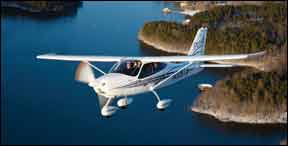
Tecnam Roots
Tecnams business experience dates to the 1940s (see sidebar on page 23) so its not some faddish LSA upstart. This shows in how Tecnam products compare against other LSAs. In our September 2008 review of five LSAs, Tecnams Sierra rose to the top as a definitive LSA because of construction quality, handling and overall value. The P2008 continues that tradition.
If the Sierra looks like a shrunken Tiger, the P2008 looks like an unsanforized
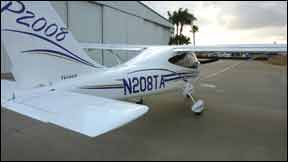
Cessna Cardinal. Its a strutted, highwing design with the same rakish, stretched-out look that the Cardinal still has more than 40 years after it was introduced. The P2008 is mixed construction, with a composite fuselage and metal wings and Tecnam has taken advantage of that by sculpting in just enough curves to please the eye. Its not as wasp-waisted as Diamonds DA20, but neither is it as slab-sided as other LSAs and trainers.
Power is standard stuff, a Rotax 912ULS with a three-blade, fixed-pitch composite propeller. Despite the high wing and struts, the P2008 is impressively slick, given how quickly 100 horsepower accelerates it to cruise speed. There’s nothing exceptional about the control system. It has a stabilator with an electric-only anti-servo tab, electric flaps and dual sticks.
What is exceptional (but ought not to be) is Tecnams attention to how these things work together. The stick, for instance, is ergonomically crooked forward to stay out of your way during entry and in flight. Its also exactly the right length to rest a wrist on a knee while grasping the stick near the bottom. Not all LSA manufacturers get this not-that-subtle detail right.
Further, Tecnam also pays attention to the interior detailing. Its automotive like, with high-backed leather seats that slide on tracks for adjusting legroom and which also cant to get at the baggage compartment, which also has a hatrack. If this makes the thing sound as if its intended as a traveling machine, it is. The front panel has a pair of large, automotive-style eyeball vents, but we found these hard to judge because in the demo we flew, the heater was slightly stuck on and the cabin was uncomfortably warm. We think the airplane could benefit from the inexpensive window vents many LSAs have and Tecnam will have those in the
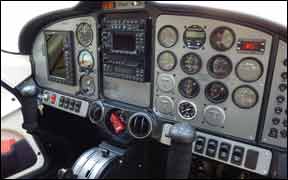
production version.
Systems
The P2008s fuel system is Cessna like. It has two integral wing tanks with a total capacity of 27.5 gallons. The tank switch is right up on the panel, below the radio stack, serving as a constant reminder about where the fuel is and how to get at it.
Given the Rotaxs modest fuel burn, still-air endurance is about four hours, with reserves. Call that about 450 miles, which is about as long as any sane person wants to stay in an LSA.
Tecnam makes no apologies about the level of detailing and avionics available for the P2008, nor should they, since they are pitching for the upper strata of LSAdom. The seats are comfortably well-appointed leather and everywhere you look, the airplane has a finished appearance.
There are three avionics tiers. The basic one-which we surmise few will buy-is a traditional six-pack instrument package with a Garmin SL40 comm, GTX327 transponder and an aera560 GPS in an AirGizmo mount. That invoices at $154,999.
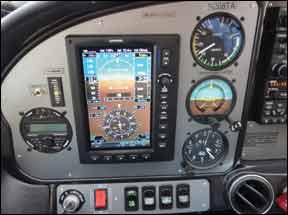
Stepping up to the Glass Panel Tourer package for $157,999 gives you an Advanced Flight System AD3500 EFIS in addition to the basic avionics in the starter package. Top of the line is called the Glass Panel Tourer De Lux, which adds an engine monitor and a Trio Pro Pilot autopilot. It sells for $169,999. You can also order custom packages, including the Garmin G3X, which was installed in the demo aircraft we flew. You can also have a Garmin 696, 695 or GNS430/530 combinations. A ballistic parachute is also on the options list. Without trying too hard, you could drive the invoice to near $200,000.
Flying It
Were always relaxed about flying Tecnam airplanes because we know what to expect. Thats not always the case with other LSAs, some of which have exceptionally light control forces that can lead to embarrassment on takeoffs and landings. Tecnam airplanes don’t disappoint and the P2008 didnt.
With its high wing, its a bit of a Cessna 150/152 experience, although the cabin is comfortably larger and better appointed. Our demo had the G3X and three back-up steam gauges immediately to the right. The airplane isn’t approved for IFR and these arent required, but Tecnams Dave Lubore told us buyers tend to want them.
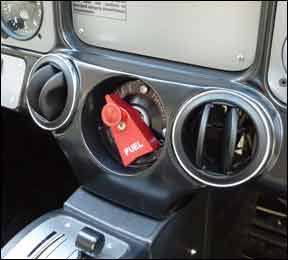
Ground handling is easy enough with differential braking and stabs at the rudder as the speed comes up. The airplane we flew, with the G3X, the backup gauges and a GNS430, had an empty weight of 840 pounds, leaving an LSA-typical 480-pound useful load. With two people aboard, there’s payload left for 18 gallons. We suspect most owners will do what they are doing now: Top the tanks, put the people in and throw bags in the back for a 75-pound overgross takeoff. Its our duty to inform you that youre not supposed to do this even if the airplane will.
We were near gross for takeoff and the airplane rotated smoothly and transitioned to a brisk climb that put us at pattern altitude before the mid downwind. With their low stall speeds-41 knots Vso in the P2008-LSAs like to be flown slow, especially on final. In the P2008, thats not necessarily easy to do because it also likes to go fast.
In pattern work, we noticed it takes a hefty throttle pull to hold the airplane below
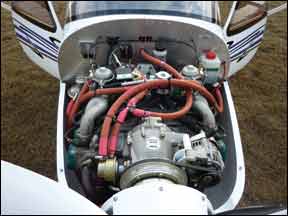
70 knots to arrive on a base leg at around 60 knots, with the flaps down. Having spent the previous day flying Cub clones, we noticed the P2008 is quite a bit slicker.
Its also childs play to land it if youre on speed. A perfect squeaker is easy on the first try because the sight picture over the nose is good and control forces are certified-airplane like, not LSA twitchy. Pitch is light, but not too light. One disconcerting thing we did notice is a noticeable buffet with full flaps down. It feels like a stall buffet, but with the nose pointed down and 65 knots indicated, thats clearly not the case. Tecnams Lubore told us the factory is working on a tailfeather fix to eliminate the buffet.
There’s hardly any pitch change on flap deployment and stalls are what youd expect from a Cessna 150. Actually, maybe a little less than youd expect. A 150 will break without much effort but the P2008 has to be pushed to show a break. (We guess, we couldnt get it to break.) Its happy doing parachute mode with the airspeed indicator close to the zero peg.
At the other end of the scale, the P2008 is toward the top of the LSA spectrum in
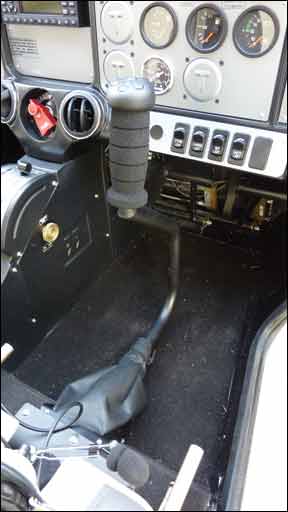
cruise speed. We recorded 114 knots true at 4000 feet burning about 5 GPH. Measured noise level in the cabin is below 94 dB.
Conclusion
Whos this airplane for? Probably not many flightschools, given its price. So Tecnam rightly has it pegged as a sport cruiser/go places airplane, which it certainly is. Too bad its not IFR legal because we think the airplane is perfectly capable of light weather flying. Otherwise, many an owner will spend a frustrating day or two on the ramp looking at his $170,000 grounded toy. This is something we wish ASTM and FAA would address. For the P2008, Tecnam will likely need a mix of full-circle pilots stepping down from twins and high-performance singles and moneyed buyers who want to go a little faster in a little more comfort, but to whom IFR isn’t important.
Thats exactly what the P2008 does and it comes from a long-established company, not one building a single LSA model. Thats a plus, in our view. Were not sure how many such buyers there are, but Tecnams got the airplane for those interested.

